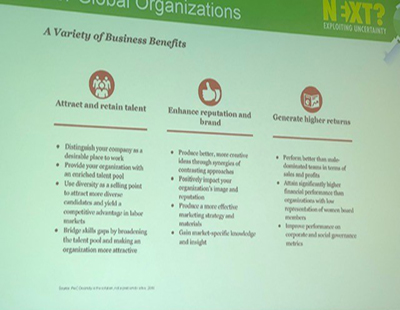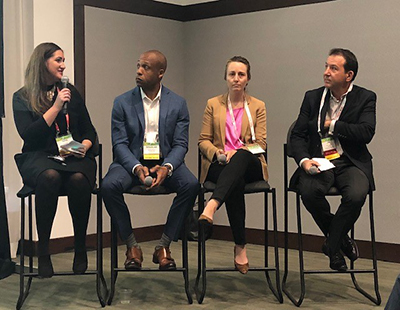The Importance of Corporate Diversity and Inclusion
At CoreNet Global's 2018 Summit in Boston, a group of panelists discussed the keys to creating an inclusive work environment and how that translates in the corporate world.
By IvyLee Rosario
Many organizations are struggling with translating a diversity and inclusion strategy into action, but at CoreNet Global’s 2018 Summit in Boston, a group of panelists shed light on how to incorporate this strategy into a company and why this program is so important. Moderated by Cushman & Wakefield’s Vice President of HR Global Occupier Services Tara Gibney, the Progressive Diversity and Inclusion Strategies for Global Organizations panel included Humana’s Vice President of Workplace Solutions Douglas Edwards, PwC’s Director Stefanie Coleman and Verizon’s Director of Real Estate James Tousignant.
While diversity and inclusion is stated as a value a priority for 77 percent of organizations, according to PwC’s Diversity and Inclusion Benchmarking Survey, 33 percent still feel diversity is a barrier for employee progression. “It’s hard to measure its return on investment, lots of organizations aren’t thinking about these programs strategically,” said Coleman. Although there are barriers to this transition, key takeaways include attracting and retaining better talent, enhancing the company reputation and brand and generating higher returns.
Business benefits
These initiatives directly relate to talent retention, innovation and the company’s bottom line. Out of the total respondents, 74 percent of CEOs who have invested in diversity and inclusion programs have seen a greater capacity for innovation within their organization. Firms with greater gender diversity are 1.4 times more likely to have sustained, profitable growth.
 “This has to come from the top down and work for everyone. It helps define the culture of a company. We’re building a culture where diversity and inclusion is at the center of the conversation. It starts with education,” said Edwards.
“This has to come from the top down and work for everyone. It helps define the culture of a company. We’re building a culture where diversity and inclusion is at the center of the conversation. It starts with education,” said Edwards.
In order to transition into a diversity and inclusion program properly, a company should create a strategy to look at the business internally. This could include unconscious bias training, utilizing infinity groups—which includes harnessing the talents and thoughts from a specific group of people in order to make diverse business decisions, creating an external strategy for customers and suppliers and having policies that support an inclusive environment. This can include:
- paternity leave
- gradual retirement
- infinity groups
- gender neutral bathrooms
- mother’s rooms
- disability features
- religious accommodations
“These are human resources topics that are now becoming general work subjects that should be constantly discussed,” noted Edwards. “Now more than ever there is a connection between real estate and human resources. We need to constantly be creating spaces to attract diverse talent.”








You must be logged in to post a comment.